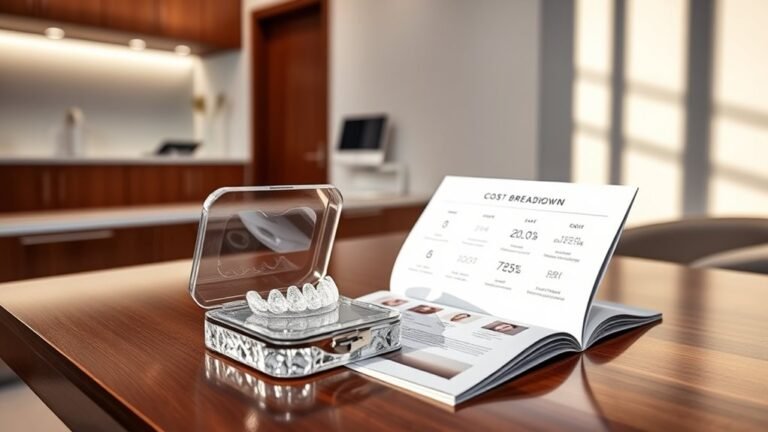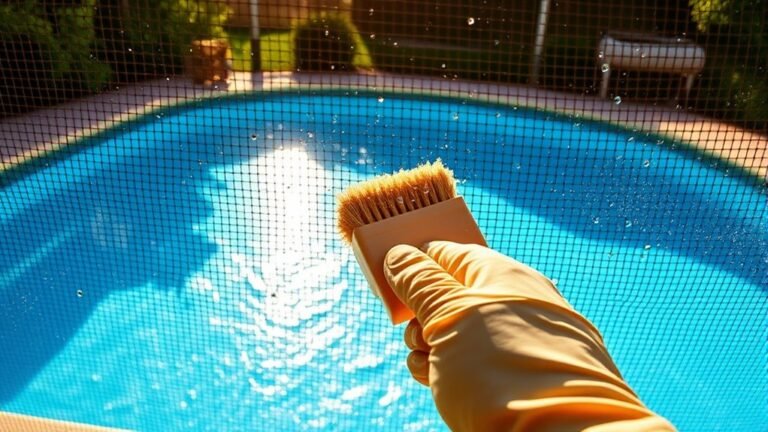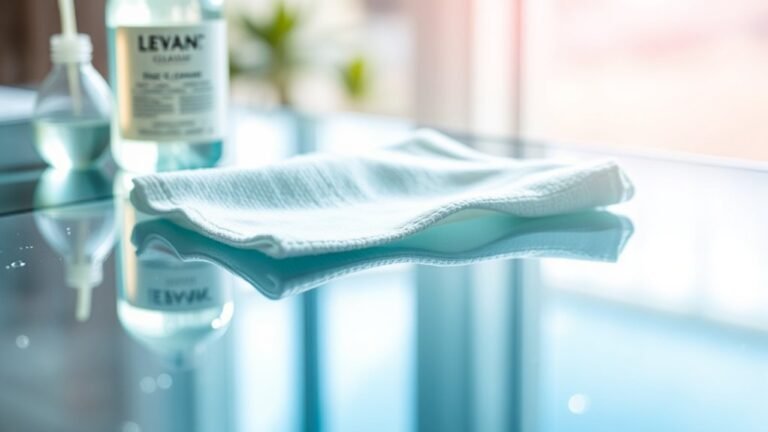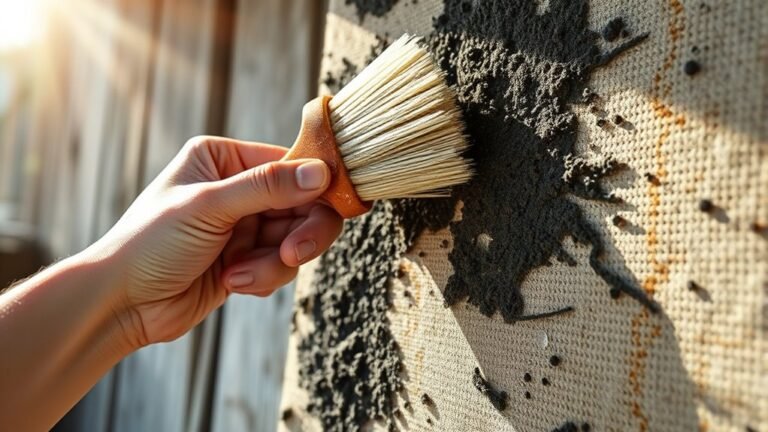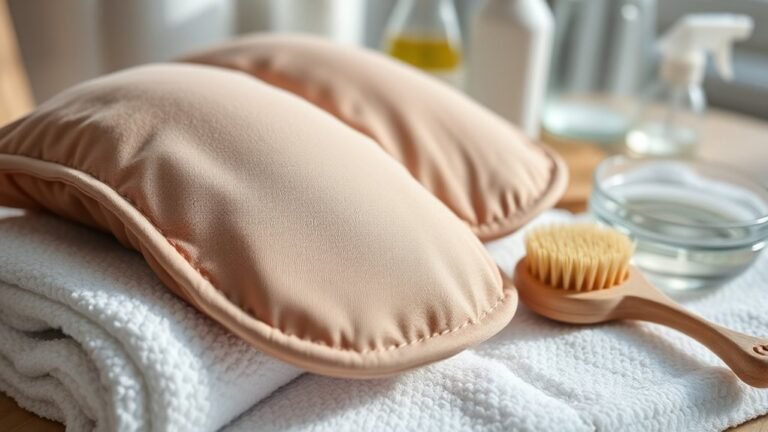Step-By-Step Guide to Cleaning Car
Start by clearing clutter from your car and parking it in a shaded area. Use moderate pressure to rinse off dirt, then wash with pH-balanced shampoo and a microfiber mitt, working top to bottom. Dry thoroughly with microfiber towels and a blower to prevent spots. Vacuum and wipe the interior surfaces carefully. Finish by applying wax or ceramic coating to protect the paint. Following these precise steps guarantees a spotless car; continuing ahead reveals deeper maintenance techniques.
Preparing Your Car for Cleaning
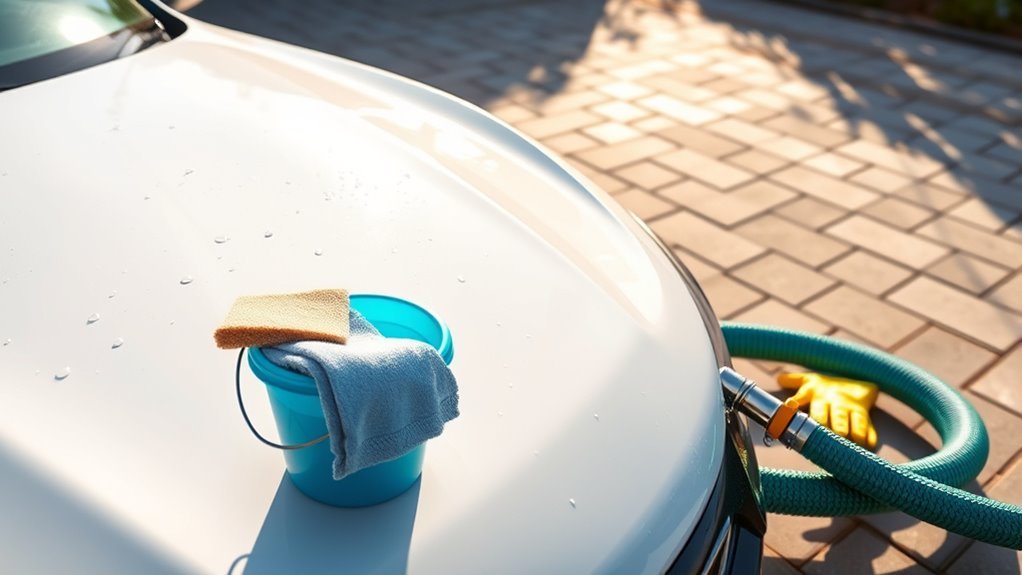
Before you begin cleaning your car, it’s crucial to prepare the vehicle properly to guarantee an efficient and damage-free process. Start by removing clutter from the interior, including any personal items, trash, and loose debris, which could obstruct your cleaning tools or cause scratches. Next, focus on organizing essentials such as floor mats, seat covers, and cleaning supplies so you can access them easily during the process. Verify all windows and doors are closed to prevent water ingress, and park the car in a shaded, well-ventilated area to avoid rapid drying that may cause water spots. Taking these preparatory steps will streamline your workflow, minimize risks, and set the foundation for a thorough and effective cleaning experience, helping you maintain your vehicle’s condition with precision and care.
Exterior Washing Techniques
When you start washing your car’s exterior, using the right techniques is essential to protect the paint and guarantee a spotless finish. Begin by using pressure washing at a moderate setting to remove loose dirt and grime without damaging the surface. Avoid high pressure near sensitive areas like trims and seals. Next, apply a pH-balanced car shampoo with a microfiber mitt for the main surfaces. Use detailing brushes to clean intricate areas such as emblems, grills, and wheel wells, ensuring dirt is fully dislodged without scratching. Work systematically from top to bottom to prevent recontamination. Rinse thoroughly with clean water after scrubbing. This methodical approach preserves your car’s finish and maximizes your freedom to enjoy a pristine exterior without risking damage.
Drying and Preventing Water Spots

How do you guarantee your car’s surface stays spotless and free of water marks after washing? Employing effective drying techniques is essential for water spot prevention. Start by:
Effective drying techniques are key to keeping your car’s surface spotless and free of water marks.
- Using a high-quality microfiber towel or a soft, absorbent drying cloth to gently blot and wipe the surface, avoiding scratches.
- Utilizing a leaf blower or a specialized car dryer to eliminate water from hard-to-reach areas without physical contact.
- Applying a quick detailer spray or a water repellent product immediately after drying to create a protective barrier that minimizes mineral deposits.
These steps guarantee thorough water removal and reduce mineral residue buildup, preserving your car’s finish and giving you the freedom to enjoy a pristine, spot-free vehicle every time.
Interior Cleaning and Maintenance
Although exterior cleanliness is essential, maintaining your car’s interior requires an equally methodical approach to preserve materials and guarantee hygiene. Start by vacuuming seats thoroughly, using appropriate attachments to reach crevices and seams where dirt accumulates. This step prevents fabric wear and prolongs upholstery life. Next, focus on organizing belongings to minimize clutter and avoid distractions during driving. Use designated compartments and storage solutions to keep items secured. Wipe down hard surfaces with suitable cleaners to remove dust and grime without damaging finishes. Pay attention to ventilation ducts and floor mats, ensuring they’re clean and functional. Regular interior maintenance not only enhances comfort and safety but also retains your vehicle’s value, giving you the freedom to enjoy a pristine environment every time you hit the road.
Applying Finishing Touches and Protective Coatings

Since you’ve completed the cleaning process, applying finishing touches and protective coatings is essential to safeguard your vehicle’s surfaces and enhance its appearance. Proper wax application or ceramic coating protects paintwork from environmental damage while providing a durable, glossy finish. Follow these steps for best results:
- Wax Application: Use a microfiber applicator to apply a thin, even layer of wax. Allow it to haze, then buff with a clean microfiber towel to a deep shine.
- Ceramic Coating: Apply ceramic coating in small sections using an applicator pad. Let it cure per manufacturer instructions, ensuring chemical bonding for long-term protection.
- Sealant or Detail Spray: After coating, use a sealant or detail spray to maintain gloss and enhance hydrophobic properties.
These finishing touches extend protection, preserve your car’s value, and keep your ride looking crisp and free.
Frequently Asked Questions
How Often Should I Wash My Car for Best Results?
When it comes to washing your car, you don’t want to drag your feet. For best results, commit to weekly maintenance to prevent dirt buildup and protect the paint. Seasonal washing is essential too—adjust your routine to tackle harsh winter salt or summer dust. This precise schedule guarantees your vehicle stays in top shape, letting you enjoy the freedom of a clean car without the hassle of major restoration later on.
What Are the Best Cleaning Products for Sensitive Car Paint?
When caring for sensitive car paint, you’ll want to choose gentle, pH-balanced car wash soaps that won’t strip protective layers. After washing, applying a high-quality car wax or paint sealant is essential; these products create a durable barrier against contaminants and UV rays while enhancing gloss. Look for waxes with natural oils or synthetic polymers for lasting protection. Always avoid harsh abrasives or acidic cleaners to preserve your paint’s integrity and freedom to shine.
Can I Use Household Cleaners on My Car’S Interior?
You might be tempted to use household cleaners on your car’s interior surfaces, but it’s a delicate dance. Many household products contain harsh chemicals that can degrade fabrics, plastics, and leather. Instead, choose cleaners specifically formulated for automotive interiors to preserve materials and avoid damage. This approach grants you the freedom to maintain a pristine cabin without risking discoloration or wear, ensuring your car’s interior stays fresh and protected for the long haul.
How Do I Safely Remove Pet Hair From Car Seats?
To safely remove pet hair from car seats, you’ll want to use effective cleaning techniques without damaging upholstery. Start by vacuuming with a brush attachment to loosen hair. Then, use a rubber glove or a pet hair remover brush, running it across the fabric to lift embedded hair. For stubborn strands, a slightly damp microfiber cloth can help gather pet hair without leaving residue, ensuring thorough, damage-free cleaning.
What Tools Do Professionals Use for Detailing Cars?
You’d think professionals use magical gadgets, but detailing techniques rely on precise, high-grade professional equipment. They wield dual-action polishers for flawless paint correction, steam cleaners to sanitize without chemicals, and specialized vacuums for deep debris extraction. Microfiber towels and brushes of varied stiffness tackle every nook. These tools, combined with your skill, free your car from dirt’s tyranny, restoring pristine freedom and shine with technical mastery that elevates detailing to an art form.


